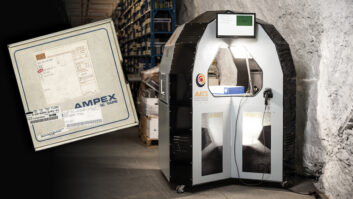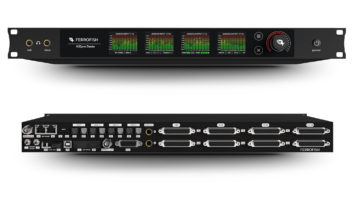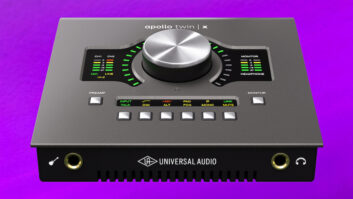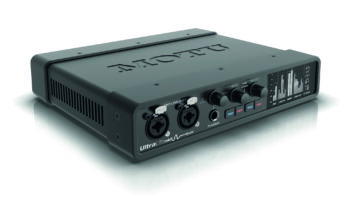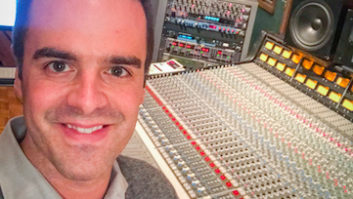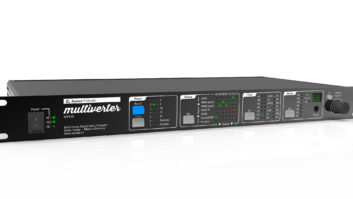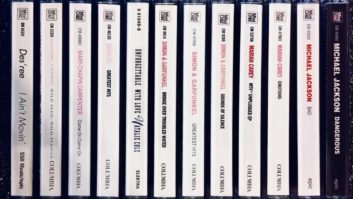ALL PRAISE SACDCheap, simple and good. These are the linchpins of consumer acceptance, pretty much in that order. Did I mention cheap? Free is better, but cheap is good if something is easy to use and fills a real or perceived need.
Last month, I got medieval on the DVD-Audio format, hopefully destabilizing the reality distortion field erected by my fellow contributors. This month, I’m making nice to the Optical Goddess by acting as the SACD shill. Not that I mind. In fact, I love most things about the format.
Let’s look at the good, bad and ugly. The good part is, of course, the sound. Say what you will about the theory, but, in practice, the clear improvement in depth and detail of the phantom image when compared to 192 kHz places Sony’s DSD (Direct Stream Digital) at the top of digital audio capture formats. Dare I say that it sounds better than analog?
What’s wrong with analog? Not much, except for the generational degradation and inherently poor signal-to-noise ratio of mag. And, yes, Dolby SR mitigates the former and fixes the latter. But digital contribution, production and distribution of rich media are here to stay. Except for fringe applications, analog pro audio is not here to stay. Me thinks we’re stuck with digits, and DSD is a better brute force approach than high-res LPCM for origination.
Another nice thing about SACD is the bidirectional compatibility. Despite the FUD (fear, uncertainty and doubt – used by PR wonks to undermine public confidence in a competitor) generated by the DVD Consortium, the half-dozen SACDs I’ve tried have all worked fine in my CD player. They sound wonderful, even on a sub-$100 system.
Remember my earlier comment about simple is good? Everyone likes simple, and DVD-A is complicated: complicated to create and, in many instances, to adopt from a consumer standpoint. The Yankee Group found that two-thirds of consumers still couldn’t program their VCRs, which says something about the public’s ability to cope with even basic technology. In discussing distribution formats with Telarc’s Michael Bishop, he summed it up nicely. “I still like SACD as a music carrier: losslessly packed high-res stereo and surround, plus the Red Book layer – that’s just it. No video monitor, menus, complicated authoring or region coding. SACD has a visual watermark and a digital watermark, encoded in the [DSD] bitstream way out of the audible range, but this is only for playback in SACD players. One can still copy the analog outputs, as pirates have been doing all along.”
The jury’s still out on the efficacy of audible watermarking to prevent unauthorized copying, but early indications are promising. An interesting related feature is the optional visible watermark that Michael mentioned. It can only be pirated by replication plant insiders, and consumers can easily tell if they’re buying black-market goods, not that that’s ever stopped someone if the price is right. When was the last time you looked at the watermark on a new $20 bill?
One last thing that I like about SACD is that the format is administered by the dynamic duo of Sony and Philips. Some find that odious, but I like what they’ve come up with so far, and they generally present a unified front, which cannot be said for the Consortium.
Okay, enough with the heaping of praise. First thing we all whine about is the impracticality of DSD production. Fine, I agree. The gear is mostly expensive and clumsy, but, as with all new ways of doing things, that’s improving all the time. Tascam’s future variant on the DA-98HR points the way toward a reasonable DSD production infrastructure, and several vendors are beavering away on competitive tools, as well. “More than 3,000 SACD titles are planned for release in 2001, and about 300 production systems are scheduled to be installed,” said Jeff Klopmeyer, Tascam’s marketing manager. “We’re proud that Sony chose Tascam to create the only tape-based recorder designed to work with these systems.” For full disclosure…
If you had the displeasure of using the first professional or consumer PCM products, you may remember the double gift of the gear having been way expensive and sounding pretty nasty compared to what is state-of-the-art today. Speaking of PCM, there are those who say, “…in order to process DSD, you have to convert it to PCM, so why go with the shortcomings of DSD in the first place?” Yeah, so, what’s your point? I don’t care what the audio wizards come up with to get the job done, as long as it sounds as good as it does and allows me all of the advantages above. Considering that there’s a brisk business in 1-inch 2-tracks, the issue of quality at any cost takes on new meaning. I admit that DSD production will be rare and exotic for most, but hey, nice-sounding gear is a thing of beauty and a joy to behold. Just to befuddle the naysayers, double-speed DSD is in the works, so both the theory and practice should improve over time.
Now for the ugly. Some of those same issues that I find compelling, namely backward compatibility and the parental influence of Sony and Philips, are also liabilities. The compatibility is achieved by fabricating what is physically a dual-layer DVD-9, and the replication cost is inherently higher than a DVD-5. That extra charge has to be absorbed somewhere, and my guess is it’ll mostly be the consumer that gets the short end o’ the stick.
As to SACD’s mum and pop…well, you may not like ’em, but you gotta admit that Sony knows how to create demand for a product, value proposition or not. I, for one, will continue to delve into the mysteries of DSD production, and I hope you march yourself down to the hi-fi store and explore SACD technology for yourself. Next time you’re on the Web, stop by The Bitstream, http://seneschal.net/bitstream, for links ‘n’ things audio.
